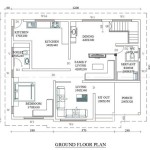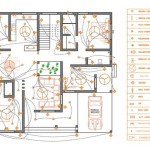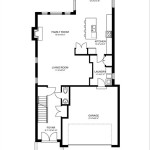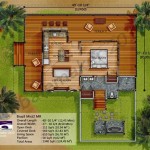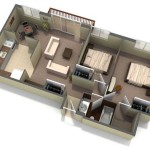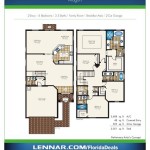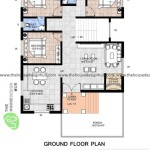Simple Floor Plans for Houses: Achieving Functionality and Affordability
Homeowners often seek floor plans that prioritize simplicity without sacrificing functionality. Simple floor plans offer numerous advantages, including lower construction costs, easier maintenance, and a greater sense of spaciousness. This article explores various aspects of simple house designs, focusing on efficient use of space, affordability, and popular layout options.
Key Benefits of Simple Floor Plans
Simple floor plans offer several key advantages, making them an attractive choice for many individuals and families:
- Cost-Effectiveness: Simpler designs often translate to lower construction costs due to reduced material usage and labor.
- Energy Efficiency: Compact layouts minimize the area that needs heating and cooling, leading to lower energy bills.
- Ease of Maintenance: Fewer rooms and simpler layouts simplify cleaning and general upkeep.
- Enhanced Spaciousness: Open-concept designs within a simple footprint can create a feeling of spaciousness even in smaller homes.
Exploring Popular Simple Floor Plan Styles
Several architectural styles lend themselves well to simple floor plans. These styles often emphasize functionality and clean lines:
- Ranch Style: Single-story homes with open layouts, typically featuring attached garages and minimal ornamentation.
- Bungalow Style: Compact, one or one-and-a-half story homes, often with covered porches and efficient use of space.
- Cabin Style: Rustic designs emphasizing natural materials and simple layouts, often suited for vacation homes or rural settings.
Optimizing Space in Simple Floor Plans
Maximizing functionality within a limited footprint is crucial for successful simple house design. Strategic space planning techniques can significantly improve livability:
- Open-Concept Living: Combining living, dining, and kitchen areas creates a sense of spaciousness and encourages interaction.
- Multi-Functional Spaces: Designing rooms that serve multiple purposes, such as a guest room that doubles as a home office, optimizes space utilization.
- Built-in Storage: Incorporating built-in shelves, cabinets, and closets maximizes storage capacity without cluttering the living space.
Considerations for Small Simple House Plans
Designing small, simple homes requires careful consideration of space allocation and functionality:
- Prioritizing Needs: Focus on essential spaces and features, carefully considering which elements are truly necessary.
- Vertical Space Utilization: Lofted ceilings and strategically placed windows can enhance the perception of space in smaller homes.
- Outdoor Living Integration: Extending living spaces outdoors through patios or decks can effectively increase usable area.
Cost-Effective Construction Techniques for Simple Homes
Building a simple home affordably involves choosing cost-effective materials and construction methods:
- Pre-fabricated Components: Utilizing pre-fabricated elements like roof trusses and wall panels can expedite construction and reduce labor costs.
- Standard Lumber Sizes: Sticking to standard lumber dimensions minimizes waste and simplifies the building process.
- Simple Roofing Systems: Opting for simpler roof designs reduces material costs and installation complexity.
Adapting Simple Floor Plans for Different Lot Sizes
Simple floor plans can be adapted to suit various lot sizes and orientations. Careful consideration of site conditions is essential:
- Narrow Lots: Two-story designs or homes with a smaller footprint are well-suited for narrow lots.
- Corner Lots: Floor plans can be designed to maximize natural light and views on corner lots.
- Sloped Lots: Split-level or walk-out basement designs can effectively utilize sloped terrain.
Incorporating Sustainable Features in Simple Designs
Sustainability is an increasingly important consideration in home design. Simple floor plans offer a natural advantage for incorporating sustainable features:
- Passive Solar Design: Orienting the home to maximize solar gain in winter and minimize it in summer can reduce energy consumption.
- Energy-Efficient Appliances: Selecting energy-efficient appliances and lighting further reduces the home's environmental impact.
- Water Conservation Measures: Implementing low-flow fixtures and rainwater harvesting systems contributes to water conservation.
The Future of Simple House Design
The trend towards simpler, more efficient living spaces is likely to continue. Future developments in simple house design may include:
- Smart Home Technology Integration: Smart thermostats, lighting controls, and security systems can further enhance efficiency and convenience.
- Prefabrication and Modular Construction: Increased use of prefabrication and modular construction techniques can reduce construction time and costs.
- Focus on Multi-Generational Living: Simple floor plans can be adapted to accommodate multi-generational families, incorporating flexible spaces that can be easily modified as needs change.

Small House Design 2024001 Pinoy Eplans Floor Plans

Est House Plans To Build Simple With Style Blog Eplans Com

Simple House Plans Blog Homeplans Com

Low Budget Simple House Design Plans For Builders Blog Builderhouseplans Com

Stylish And Simple Inexpensive House Plans To Build Houseplans Blog Com

Est House Plans To Build Simple With Style Blog Eplans Com

Low Budget Simple House Design Plans For Builders Blog Builderhouseplans Com

Simple Best House Plans And Floor Affordable

Simple House Plans Blog Homeplans Com

Picture Of Simple Two Bedroom Single Floor House With 68 M² Area 2 Plans Design

